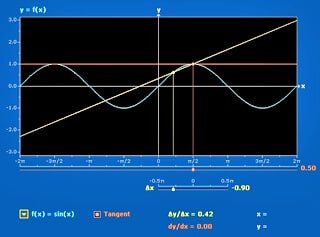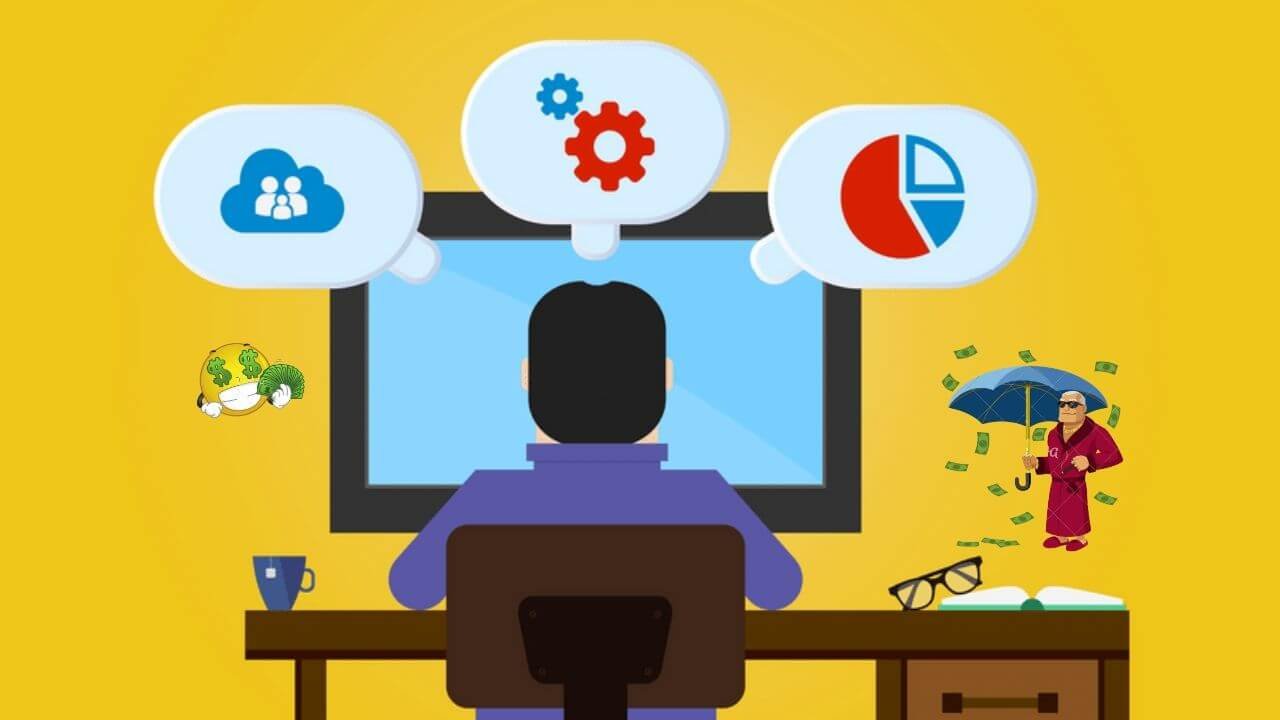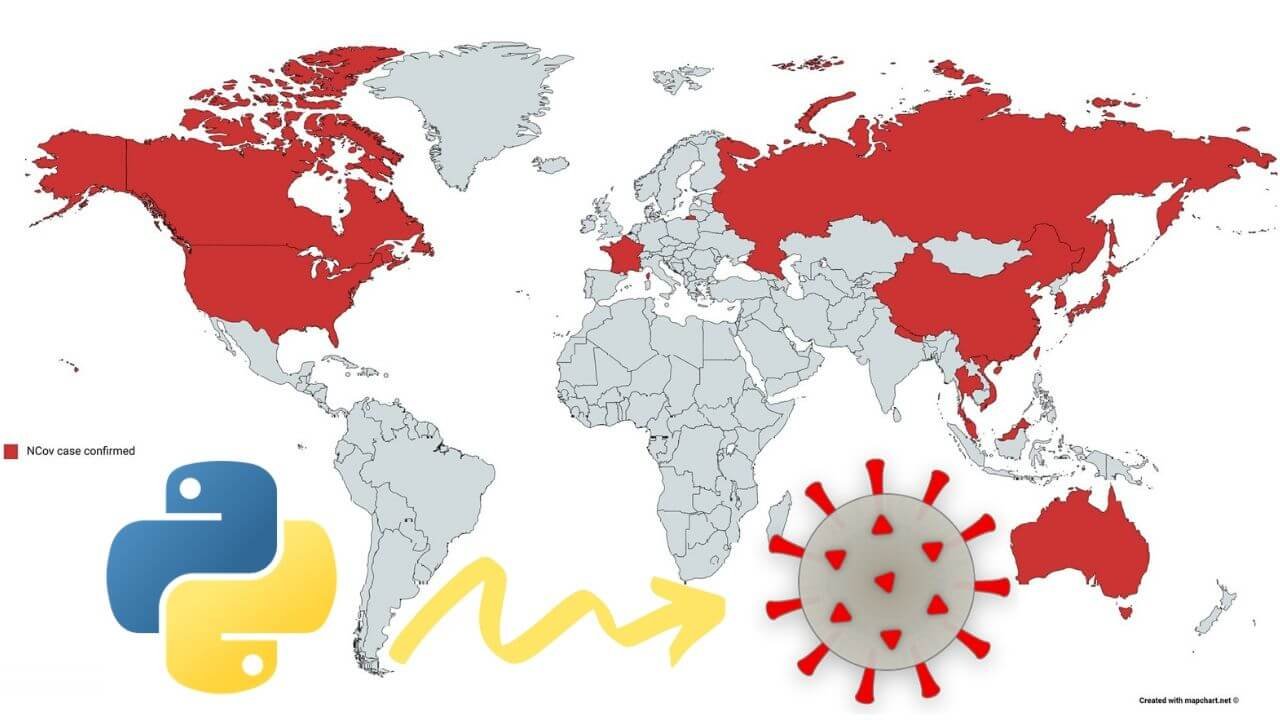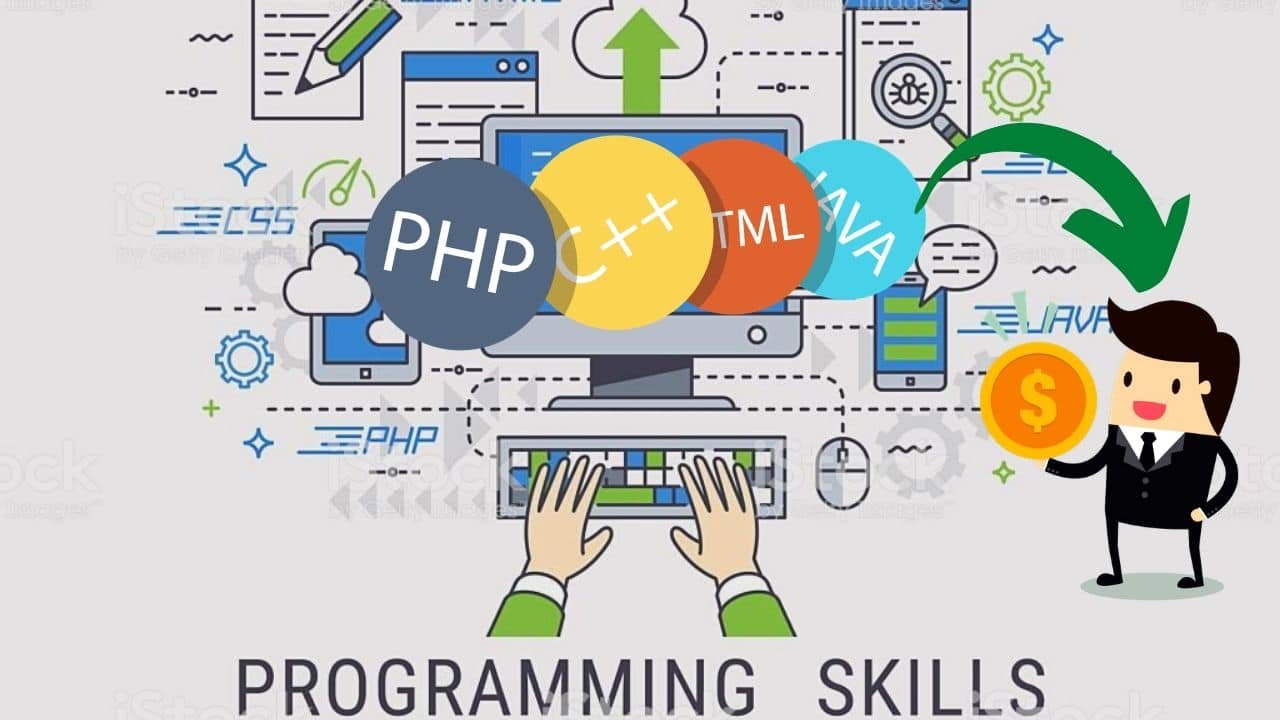So, as we all know there is a high demand for every sort of IT expert in the past 20 or so years. With the rise of the Artificial Intelligence (AI) the IT-related job positions will be the most wanted since the flood of money is huge in this industry
Most of the top companies pay over $100,000 per year for good employees, especially if you come from some of the world’s best universities.
Not many of us can afford to go to such universities since we don’t have that amount of money or simply because we are not good enough. Obviously, this shouldn’t be a reason to quit your dreams and settle for something else than the best.
As we’ve discussed in our article about the top 10 best FREE Artificial Intelligence Courses from Harvard, MIT, and Stanford and also the top 10 best Artificial Intelligence YouTube Channels in 2020 there are tons of free courses from the best universities in the world that anyone can learn from.
The latest article is about how to become a Certified Data Scientist at Harvard University for free.
Most of the courses we’ve found come from MIT University. In this article, we are going to create a program using MIT University free courses that will help you become Computer Science Engineer with expertise in Data Science, Machine Learning, Deep Learning, NLP, and Computer Vision.
Since this is a full program from the Computer Science and Engineering degree, this program will be organized in 8 semesters spread in 4 academic years (Keep in mind that you are studying yourselves, so it should take a shorter period of time).
Obviously, you are not going to get a Bachelor’s degree diploma, but you are going to have equivalent knowledge if you take things seriously.
Here are two articles that you will also find very helpful:
- How to Become Machine Learning Specialist in Under 20 Hours from This FREE LinkedIn Course
- Top 50 FREE Artificial Intelligence, Computer Science, Engineering and Programming Courses from the Ivy League Universities
The Computer Science and Engineering program
Year 1
Semester 1
This course is intended for students with little or no programming experience. It aims to provide students with an understanding of the role computation can play in solving problems and to help students, regardless of their major, feel justifiably confident of their ability to write small programs that allow them to accomplish useful goals. The class uses the Python 3.5 programming language. Here are all the lecture videos.

(Photographs by Rachel Macniven and James Moberg) Taken from ocw.mit.edu
This course provides a fast-paced introduction to the C and C++ programming languages. You will learn the required background knowledge, including memory management, pointers, preprocessor macros, object-oriented programming, and how to find bugs when you inevitably use any of those incorrectly. There will be daily assignments and a small-scale individual project.

(Image courtesy of Haynes Miller, Heidi Burgiel, and J.-M. Claus) Taken from ocw.mit.edu
This calculus course covers differentiation and integration of functions of one variable and concludes with a brief discussion of infinite series. Calculus is fundamental to many scientific disciplines including physics, engineering, and economics.
This course covers elementary discrete mathematics for computer science and engineering. It emphasizes mathematical definitions and proofs as well as applicable methods.
Topics include formal logic notation, proof methods; induction, well-ordering; sets, relations; elementary graph theory; integer congruences; asymptotic notation and growth of functions; permutations and combinations, counting principles; discrete probability. Further selected topics may also be covered, such as recursive definition and structural induction; state machines and invariants; recurrences; generating functions.
This course will teach you how to use computation to accomplish a variety of goals and provides you with a brief introduction to a variety of topics in computational problem-solving.
This course is aimed at students with some prior programming experience in Python and a rudimentary knowledge of computational complexity. You will spend a considerable amount of time writing programs to implement the concepts covered in the course.
Semester 2
This is a course in the department’s “Computer Systems and Architecture” concentration. This course is a study of the evolution of computer architecture and the factors influencing the design of hardware and software elements of computer systems.
Topics may include: instruction set design; processor micro-architecture and pipelining; cache and virtual memory organizations; protection and sharing; I/O and interrupts; in-order and out-of-order superscalar architectures; VLIW machines; vector supercomputers; multithreaded architectures; symmetric multiprocessors; and parallel computers.
This course covers the applications of algebra to combinatorics. Topics include enumeration methods, permutations, partitions, partially ordered sets and lattices, Young tableaux, graph theory, matrix tree theorem, electrical networks, convex polytopes, and more.
This course covers vector and multi-variable calculus. It is the second semester in the freshman calculus sequence. Topics include vectors and matrices, partial derivatives, double and triple integrals, and vector calculus in 2 and 3-space.

(Picture from Freepik: @user6164906)
This course focuses on programming, in particular the object-oriented programming paradigm in Python. Topics include primitives, expressions, assignments, functions, environments, OOP, and inheritance.
The overview handout provides a more detailed introduction, including the big ideas of the session, key vocabulary, what you should understand (theory) and be able to do (practice) after completing this session, and additional resources.
This course is a fast-paced introduction to the C and C++ programming languages, with an emphasis on good programming practices and how to be an effective programmer in these languages. Topics include object-oriented programming, memory management, advantages of C and C++, optimization, and others. Students are given weekly coding assignments and a final project to hone their skills. Recommended for programmers with some background and experience in other languages.
Year 2
Semester 3
This course provides an introduction to mathematical modeling of computational problems. It covers the common algorithms, algorithmic paradigms, and data structures used to solve these problems.
The course emphasizes the relationship between algorithms and programming and introduces basic performance measures and analysis techniques for these problems. Here are all the lecture videos.
This course provides an elementary introduction to probability and statistics with applications. Topics include: basic combinatorics, random variables, probability distributions, Bayesian inference, hypothesis testing, confidence intervals, and linear regression.
This course includes internetworking philosophies, unicast and multicast routing, congestion control, network quality of service, mobile networking, router architectures, network-aware applications, content dissemination systems, network security, and performance issues. Material for the course will be drawn from research papers, industry white papers, and Internet RFCs.
This is a basic subject on matrix theory and linear algebra. Emphasis is given to topics that will be useful in other disciplines, including systems of equations, vector spaces, determinants, eigenvalues, similarity, and positive definite matrices.

(Picture from Unsplash by Maximilian Weisbecker)
This course is an introduction to software engineering, using the Java™ programming language. Students will learn the fundamentals of Java. The focus is on developing high quality, working software that solves real problems. The course is designed for students with some programming experience, but if you have none and are motivated you will do fine.
Semester 4
This course studies fundamental design and implementation ideas in the engineering of operating systems. Lectures are based on a study of UNIX and research papers. Topics include virtual memory, threads, context switches, kernels, interrupts, system calls, interprocess communication, coordination, and the interaction between software and hardware. Individual laboratory assignments involve the implementation of a small operating system in C, with some x86 assembly.
This course includes the present state of software engineering, what has been tried in the past, what worked, what did not, and why. Topics may differ in each offering, but will be chosen from: the software process and lifecycle; requirements and specifications; design principles; testing, formal analysis, and reviews; quality management and assessment; product and process metrics; COTS and reuse; evolution and maintenance; team organization and people management; and software engineering aspects of programming languages.
This course introduces students to the basic knowledge representation, problem-solving, and learning methods of artificial intelligence. Upon completion of 6.034, students should be able to develop intelligent systems by assembling solutions to concrete computational problems; understand the role of knowledge representation, problem-solving, and learning in intelligent-system engineering; and appreciate the role of problem-solving, vision, and language in understanding human intelligence from a computational perspective. Learn more about AI by reading these articles.
This is an intermediate algorithms course with an emphasis on teaching techniques for the design and analysis of efficient algorithms, emphasizing methods of application. Topics include divide-and-conquer, randomization, dynamic programming, greedy algorithms, incremental improvement, complexity, and cryptography. Here are all the lecture videos.
Discrete stochastic processes are essentially probabilistic systems that evolve in time via random changes occurring at discrete fixed or random intervals. This course aims to help students acquire both the mathematical principles and the intuition necessary to create, analyze, and understand insightful models for a broad range of these processes.
The range of areas for which discrete stochastic-process models are useful is constantly expanding and includes many applications in engineering, physics, biology, operations research, and finance.
Year 3
Semester 5
This course relies on primary readings from the database community to introduce graduate students to the foundations of database systems, focusing on basics such as the relational algebra and data model, schema normalization, query optimization, and transactions.
This course covers abstractions and implementation techniques for the design of distributed systems. Topics include: server design, network programming, naming, storage systems, security, and fault tolerance. The assigned readings for the course are from the current literature.
Digital Signal Processing begins with a discussion of the analysis and representation of discrete-time signal systems, including discrete-time convolution, difference equations, the z-transform, and the discrete-time Fourier transform.
Emphasis is placed on the similarities and distinctions between discrete-time. The course proceeds to cover digital network and nonrecursive (finite impulse response) digital filters.
This course provides an overview of robot mechanisms, dynamics, and intelligent controls. Topics include planar and spatial kinematics, and motion planning; mechanism design for manipulators and mobile robots, multi-rigid-body dynamics, 3D graphic simulation; control design, actuators, and sensors; wireless networking, task modeling, human-machine interface, and embedded software. Weekly laboratories provide experience with servo drives, real-time control, and embedded software.
This course is a first-year graduate course in algorithms. Emphasis is placed on fundamental algorithms and advanced methods of algorithmic design, analysis, and implementation.
Techniques to be covered include amortization, randomization, fingerprinting, word-level parallelism, bit scaling, dynamic programming, network flow, linear programming, fixed-parameter algorithms, and approximation algorithms.
Domains include string algorithms, network optimization, parallel algorithms, computational geometry, online algorithms, external memory, cache, and streaming algorithms, and data structures.
Semester 6

(Picture from Unsplash by Charles Deluvio)
This course is an introductory course on machine learning which gives an overview of many concepts, techniques, and algorithms in machine learning, beginning with topics such as classification and linear regression and ending up with more recent topics such as boosting, support vector machines, hidden Markov models, and Bayesian networks.
The course will give the student the basic ideas and intuition behind modern machine learning methods as well as a bit more formal understanding of how, why, and when they work. The underlying theme in the course is statistical inference as it provides the foundation for most of the methods covered. Learn more about Machine Learning by reading these articles.
This is an advanced interdisciplinary introduction to applied parallel computing on modern supercomputers. It has a hands-on emphasis on understanding the realities and myths of what is possible on the world’s fastest machines.
We will make prominent use of the Julia Language, a free, open-source, high-performance dynamic programming language for technical computing.
This course will examine methods that have emerged from both fields and proven to be of value in recognizing patterns and making predictions from an applications perspective. We will survey applications and provide an opportunity for hands-on experimentation with algorithms for data mining using easy-to-use software and cases.
This course offers an in-depth theoretical foundation for statistical methods that are useful in many applications. The goal is to understand the role of mathematics in the research and development of efficient statistical methods.
This course is an introduction to computational theories of human cognition. Drawing on formal models from classic and contemporary artificial intelligence, students will explore fundamental issues in human knowledge representation, inductive learning, and reasoning.
What are the forms that our knowledge of the world takes? What are the inductive principles that allow us to acquire new knowledge from the interaction of prior knowledge with observed data? What kinds of data must be available to human learners, and what kinds of innate knowledge (if any) must they have?
Year 4
Semester 7
Linear algebra concepts are key for understanding and creating machine learning algorithms, especially as applied to deep learning and neural networks. This course reviews linear algebra with applications to probability and statistics and optimization–and above all a full explanation of deep learning. Here are all the lecture videos.
The purpose of this course is to provide a mathematically rigorous introduction to these developments with emphasis on methods and their analysis.
The course provides a survey of the theory and application of time series methods in econometrics. Topics covered will include univariate stationary and non-stationary models, vector autoregressions, frequency-domain methods, models for estimation and inference in persistent time series, and structural breaks.
This course is a seminar in real-time language comprehension. It considers models of sentence and discourse comprehension from the linguistic, psychology, and artificial intelligence literature, including symbolic and connectionist models.
Topics include ambiguity resolution and linguistic complexity; the use of lexical, syntactic, semantic, pragmatic, contextual and prosodic information in language comprehension; the relationship between the computational resources available in working memory and the language processing mechanism; and the psychological reality of linguistic representations.
The purpose of the class is to expose undergraduate and graduate students to the mathematical concepts and techniques used in the financial industry. Mathematics lectures are mixed with lectures illustrating the corresponding application in the financial industry. MIT mathematicians teach the mathematics part while industry professionals give the lectures on applications in finance.
Semester 8
This course is a graduate introduction to natural language processing – the study of human language from a computational perspective. It covers syntactic, semantic, and discourse processing models, emphasizing machine learning or corpus-based methods and algorithms.
It also covers applications of these methods and models in syntactic parsing, information extraction, statistical machine translation, dialogue systems, and summarization. The subject qualifies as an Artificial Intelligence and Applications concentration subject.
This course aims to give students the tools and training to recognize convex optimization problems that arise in scientific and engineering applications, presenting the basic theory, and concentrating on modeling aspects and results that are useful in applications.
Topics include convex sets, convex functions, optimization problems, least-squares, linear and quadratic programs, semidefinite programming, optimality conditions, and duality theory.
Applications to signal processing, control, machine learning, finance, digital and analog circuit design, computational geometry, statistics, and mechanical engineering are presented. Students complete hands-on exercises using high-level numerical software.
This is a class about applying autonomy to real-world systems. The overarching theme uniting the many different topics in this course will center around programming a cognitive robotic. This class takes the approach of introducing new reasoning techniques and ideas incrementally.
We start with the current paradigm of programming you’re likely familiar with, and evolve it over the semester—continually adding in new features and reasoning capabilities—ending with a robust, intelligent system.
These techniques and topics will include algorithms for allowing a robot to: Monitor itself for potential problems (both observable and hidden), scheduling tasks in time, coming up with novel plans to achieve desired goals over time, dealing with the continuous world, collaborating with other (autonomous) agents, dealing with risk, and more. Here are all the lecture videos.
This interdisciplinary course provides a hands-on approach to students in the topics of bioinformatics and proteomics. Lectures and labs cover sequence analysis, microarray expression analysis, Bayesian methods, control theory, scale-free networks, and biotechnology applications.
Designed for those with a computational and/or engineering background, it will include current real-world examples, actual implementations, and engineering design issues. Where applicable, engineering issues from signal processing, network theory, machine learning, robotics, and other domains will be expounded upon.
Machine Vision provides an intensive introduction to the process of generating a symbolic description of an environment from an image. Lectures describe the physics of image formation, motion vision, and recovering shapes from shading. Binary image processing and filtering are presented as preprocessing steps. Further topics include photogrammetry, object representation alignment, analog VLSI, and computational vision. Applications to robotics and intelligent machine interaction are discussed.
Conclusion
So, here is our way of organizing the courses into academic years for every Computer Science Engineer with expertise in Machine Learning, Deep Learning, NLP, Computer Vision, etc.
The diploma is not guaranteed for your knowledge, but your actions are. That being said, here is a perfect chance to become a Computer Science Engineer for FREE following MIT University courses.
If you think you can do it, give it a chance, remember you can skip some of the courses, you can add some others or you can create a totally custom program that suits you the best, there are tons of other FREE courses.
Also, you don’t have the pressure of finishing your assignments on time or the fear of failing at your exams, so practically it’s a great chance to become a Computer Science Engineer following FREE MIT University courses without the hustle of every MIT University student.
If this you don’t want the academic way of studying, then check out the other articles on our page, most of them are practical implementations of Artificial Intelligence through real-world projects.
Like with every post we do, we encourage you to continue learning, trying and creating.






